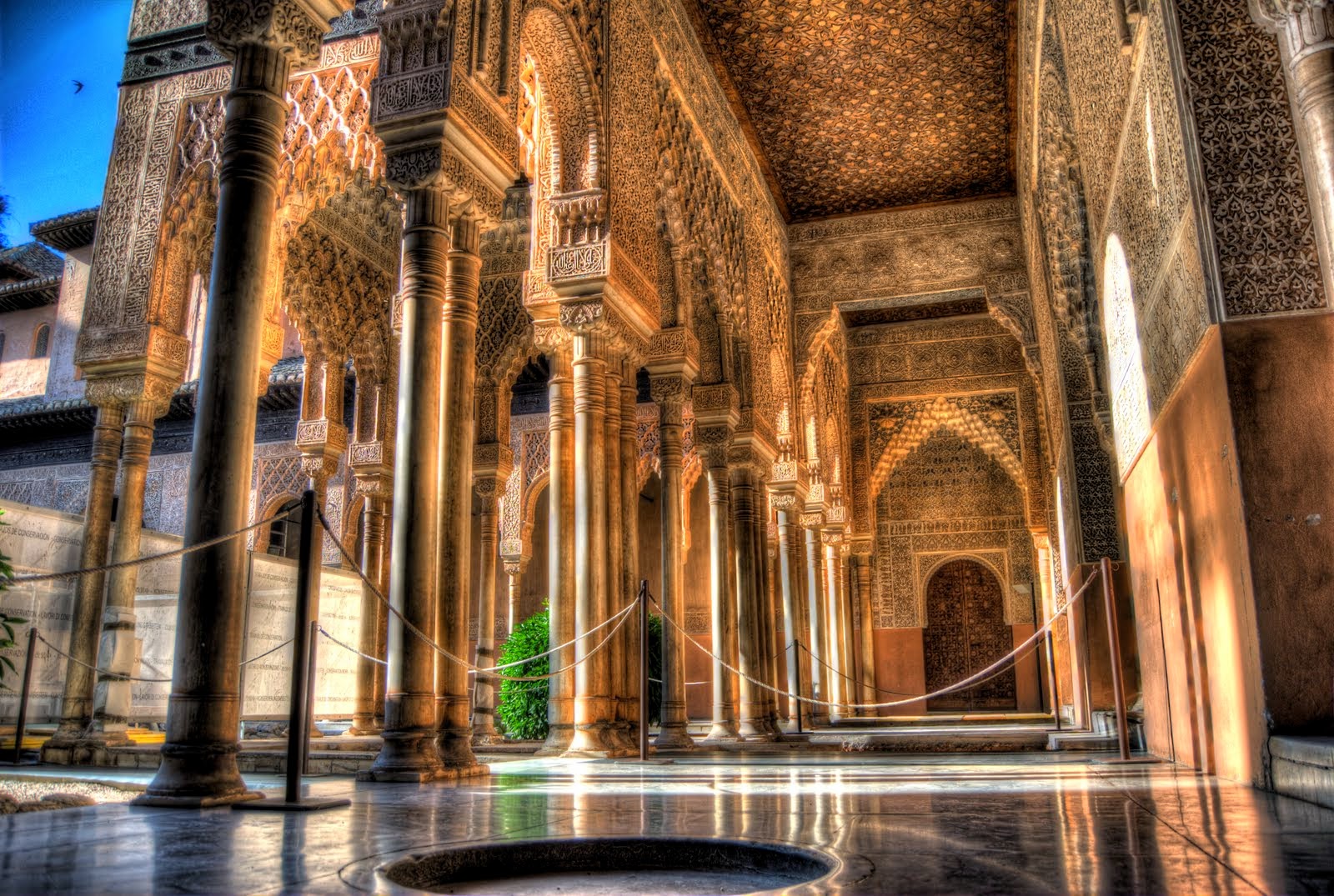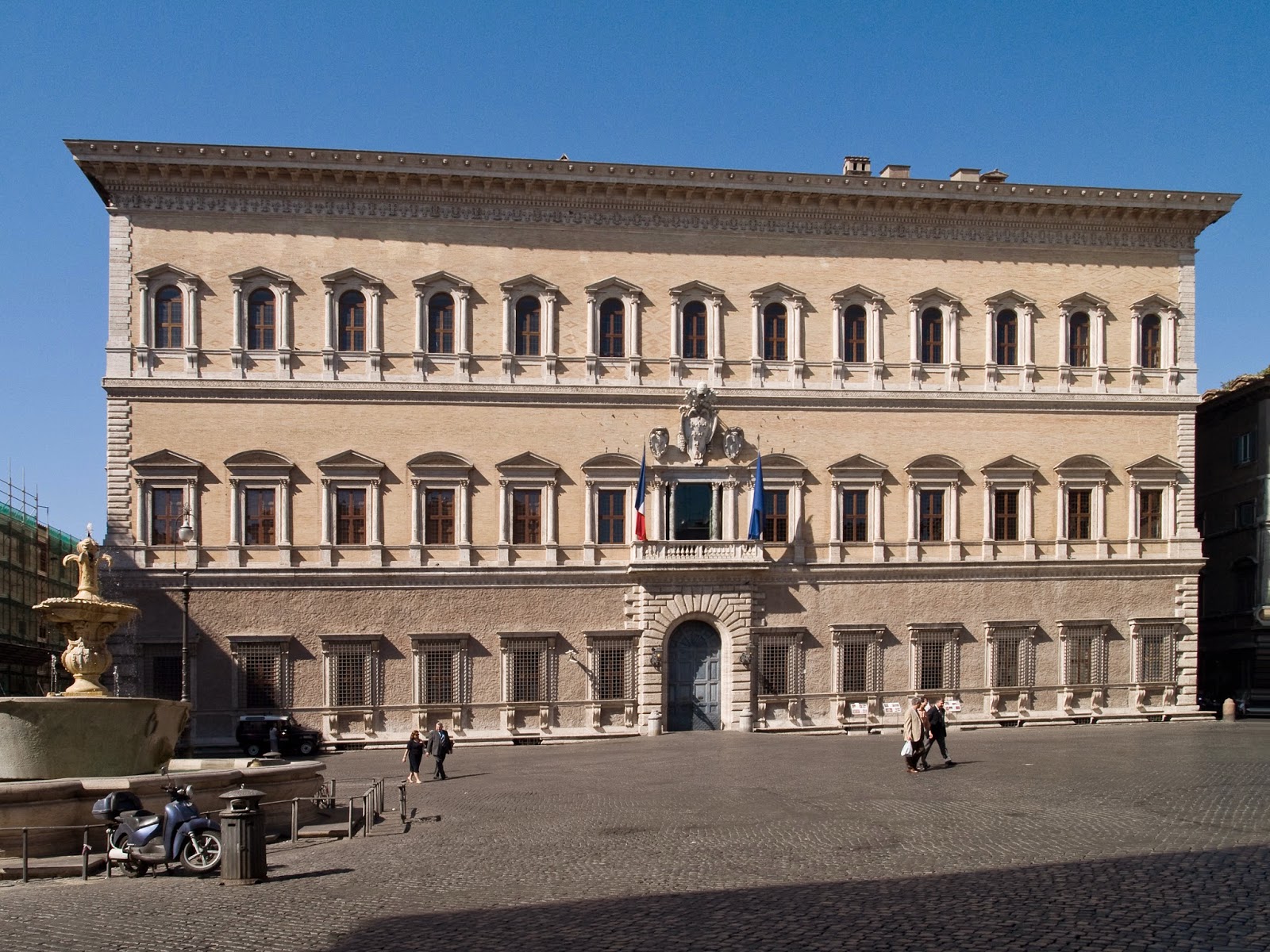I first looked at Megan's blog, and I learned a lot about some of the historical events leading up to the Spanish Renaissance. She even mentioned the gold and silver that was taken from the Americas when the Spanish had conquered them. That gold and silver is now inlaid and placed throughout the cathedrals and palaces during this time period. Her predominate focus on architecture was great because it is such an important topic to cover during this time period.
Justine's modern day applications of Spanish influences had so many design elements of each space that resembled this time period such as the wrought iron gate and the busy patterns. She also went into some detail about the three main architectural styles that came into their own during the Spanish Renaissance, and each of the modern day application examples were able to depict them successfully and beautifully.
Wednesday, March 26, 2014
SPANISH RENAISSANCE
 |
| Seville City Hall - Plateresco Style - Seville, Spain |
The Spanish Renaissance emerged from influences of the Italian Renaissance with its main features focusing on art, literature, and science. 1492 is the year that is commonly accepted as the beginning of such influences. Architecture had a shift that stemmed from a focus on human nature and a revived interest in classical orders.
Architecture
There are many different remarkable and distinguished architectural feats that stemmed from this time period ranging from Medieval castles to religious cathedrals.
Palaces and Castles
THEN:
 |
| Alahambra - Granada, Spain |
 |
| El Escorial - San Lorenzo de Escorial, Spain |
 |
| Castillo de La Mota - Valladolid, Spain |
NOW:

Thursday, March 20, 2014
Review of the Italian Renaissance
I first looked at Natalie's blog, and she included a lot of information about the history of where and how the Italian Renaissance began. There is no direct time period to distinguish the art and architecture, but she pointed out different architectural and furniture design pieces that were constructed and gave me a clearer understanding on what is considered Italian Renaissance design.
Next I browsed through Paige's blog, and she focused on entirely furniture design which is a major topic from the Italian Renaissance considering it was the first time in history that residential design became eminent for upper and middle classes alike. Her findings on the modern examples of each piece were great because they all highlighted the main detail points of each chair and table.
Also! I found this great video on this guy climbing up the 463 steps to the tip of the Duomo in Florence! He gives you a close look at the architecture and detail that went into the construction and design with the interior of the church and the frescos of the dome. I will vouch for the guy, the views at the very tip are breathtaking. Enjoy!
https://www.youtube.com/watch?v=ohB1sNzpBe0
Next I browsed through Paige's blog, and she focused on entirely furniture design which is a major topic from the Italian Renaissance considering it was the first time in history that residential design became eminent for upper and middle classes alike. Her findings on the modern examples of each piece were great because they all highlighted the main detail points of each chair and table.
Also! I found this great video on this guy climbing up the 463 steps to the tip of the Duomo in Florence! He gives you a close look at the architecture and detail that went into the construction and design with the interior of the church and the frescos of the dome. I will vouch for the guy, the views at the very tip are breathtaking. Enjoy!
https://www.youtube.com/watch?v=ohB1sNzpBe0
Wednesday, March 19, 2014
ITALIAN RENAISSANCE
 |
| City of Florence from Piazzale Michelangelo |
The word Renaissance literally means "rebirth," and Florence was the city where it essentially began. The classical forms from past time periods are now being refined and adapted to new uses that favored comfort, convenience, and beauty. The development also showed signs of a secular shift rather than one that surrounded religion.
There was also a humanistic movement towards emotion and love that was translated into the arts. The writings of Dante's and other authors shifted toward grammar, rhetoric, history, poetry, and moral philosophy which we study today in various humanities classes. The art and architecture had similar characteristics to the Florentine's with characterizations such as femininity, structured, dainty, and symmetry. Artists who accomplished architectural ventures were viewed as ones to have completed the highest achievement possible.
Furniture
Residential Design was becoming more prominent during the Italian Renaissance. Client relationships with architects, painters, furniture designers, and sculptors held a long lasting relationship who would be working with a family's interiors for years.
 |
| Sedia Chair |
THEN:
The Sedia Chair was stream lined and rectangular. Decorative stretchers and runners connected each leg with one another. The back and the seat of the chair was upholstered in either velvet, tapestry, or ornamental leather. Nail heads and fringe were different decorative additives represented in Italian Renaissance furniture design.
 |
| Outdoor Rocking Chair |
NOW:
Some styles of residential outdoor furniture resemble different attributes of the Sedia Chair, i.e. the rectangular form and the stretcher and runner connecting the legs to one another.
Architecture
Cathedrals and Palazzi sum up the large category of architecture and construction of the Italian Renaissance. The typical palazzo facade included much repetition, alternation, and progression. They had central courtyards that gave the residents access to private and cleaner outdoor space enclosed from the busy city.
 |
| Palazzo Farnese - Rome, Italy |
THEN:
The Palazzo Farnese has a simple and symmetrical facade. It had a central courtyard complete with arches, columns, pilasters, and corbels. It was completed my Michelangelo originally for Cardinal Farnese.
 |
| Courthouse in Baca Courthouse, Colorado |
NOW:
Particular courthouses with a symmetrical, un-ornamented facade are a modern take on the Palazzo Farnese. The architecture of the overhang detailing and decorated detail over each window directly relate to those of the palazzo.
Wednesday, March 5, 2014
THE AMERICAS
The Americas is a period made up of four different empires each with their own distinct variation of the same type of architecture. The general time period is between 2000 BC - 1521 AD and that includes the Olmecs, the Teotihuacans, the Aztecs, and the Mayans.
NOW:
Different commercial settings utilize the long and grand staircases both as a design aesthetic and for architectural reasonings. Places like opera houses, theaters, and even large court houses and department stores use grand staircases that indirectly resemble those for the Mesoamerican Mexican pyramids.
Today, we know the Aztec style design to be geometric and extremely vibrant and colorful. It is emulated on all different kinds of phone cases, folders, web design, and even wallpaper and upholstery for design use.
 |
| Map of Mesoamerica |
The Aztecs 1000 - 1500 CE
The Aztecs were an ethnic group located in central Mexico that dominated much of their time period. The capital city was Tenochtitlan which is modern day Mexico City. There were approximately 200,000 inhabitants and at the height of their time, they were and organized and strong group that ruled with fear.
Architecture
Unlike early European time periods, the Aztecs had a very different style or architecture that didn't involve any central religious structures of the city. They did construct their very own religious centers that had similar attributes to the Ancient Egyptian pyramids, but smaller in size and with a different facade made of stone and brick. One of the main temples was Templo Mayor, and it had two different temples - the God of War and the God of Agriculture. It was located in their ceremonial center that was two miles in length with residential dwellings surrounding it.
THEN:
Templo Mayor was one of the Aztecs main temple platforms within their ceremonial center. Mexican pyramids by nature were made by building over older ones, and thus making it look bulky and short. The 197 foot high stricture was complete with a long flight of stairs that gave access to the temples at the top.
Templo Mayor was one of the Aztecs main temple platforms within their ceremonial center. Mexican pyramids by nature were made by building over older ones, and thus making it look bulky and short. The 197 foot high stricture was complete with a long flight of stairs that gave access to the temples at the top.
NOW:
Different commercial settings utilize the long and grand staircases both as a design aesthetic and for architectural reasonings. Places like opera houses, theaters, and even large court houses and department stores use grand staircases that indirectly resemble those for the Mesoamerican Mexican pyramids.
Art
Aztec art was influenced by a long history of culture and religion. Only the upper class were allowed to own any sort of art. Insects, birds, fish and animals, and other living themes were organisms that inspired the people of the Aztec Empire. A lot of the art that was recovered and discovered was religion related, and the Gods were typically depicted as different animals. A lot of their art told a story that pertained to a recent sacrifice, conquest, or their daily lives.
 |
| Fresco of a Snake |
NOW:
Today, we know the Aztec style design to be geometric and extremely vibrant and colorful. It is emulated on all different kinds of phone cases, folders, web design, and even wallpaper and upholstery for design use.
Subscribe to:
Comments (Atom)







